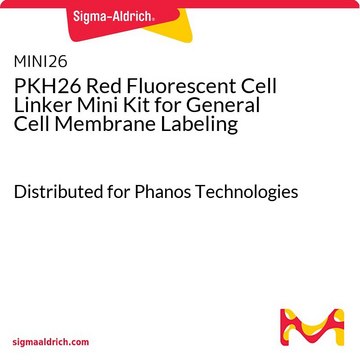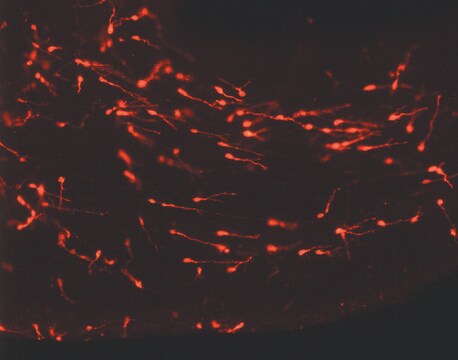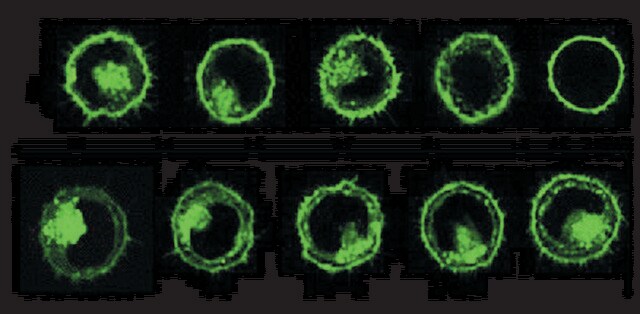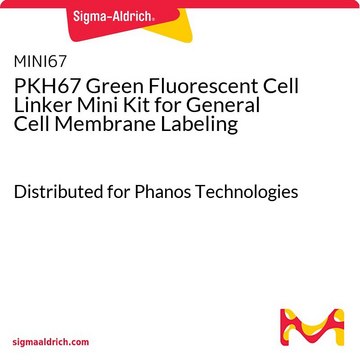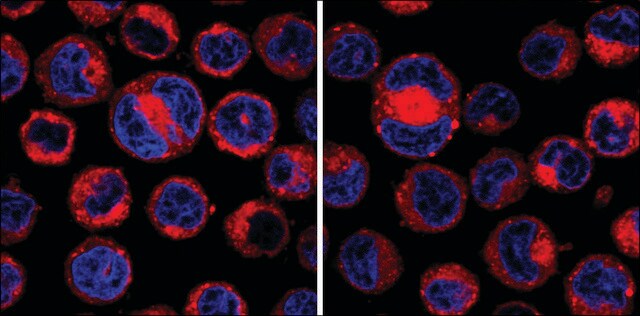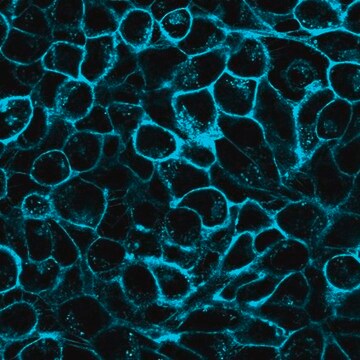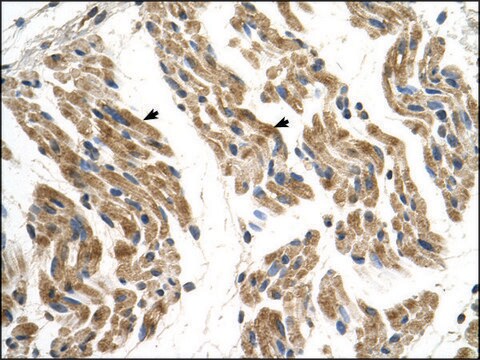CGLDIL
Verdünnungsmittel C zur allgemeinen Membranmarkierung
Distributed for Phanos Technologies
Synonym(e):
PKH diluent
About This Item
Empfohlene Produkte
Qualitätsniveau
Form
liquid
Lagerbedingungen
dry at room temperature
Methode(n)
flow cytometry: suitable
Anwendung(en)
cell analysis
detection
Nachweisverfahren
fluorometric
Versandbedingung
ambient
Anwendung
Verlinkung
Rechtliche Hinweise
Nur Kit-Komponenten
- Diluent C 6 vial(s)
Hier finden Sie alle aktuellen Versionen:
Besitzen Sie dieses Produkt bereits?
In der Dokumentenbibliothek finden Sie die Dokumentation zu den Produkten, die Sie kürzlich erworben haben.
Kunden haben sich ebenfalls angesehen
Artikel
A video about how you can use fluorescent cell tracking dyes in combination with flow and image cytometry to study interactions and fates of different cell types in vitro and in vivo.
PKH and CellVue® Fluorescent Cell Linker Kits provide fluorescent labeling of live cells over an extended period of time, with no apparent toxic effects.
Unser Team von Wissenschaftlern verfügt über Erfahrung in allen Forschungsbereichen einschließlich Life Science, Materialwissenschaften, chemischer Synthese, Chromatographie, Analytik und vielen mehr..
Setzen Sie sich mit dem technischen Dienst in Verbindung.